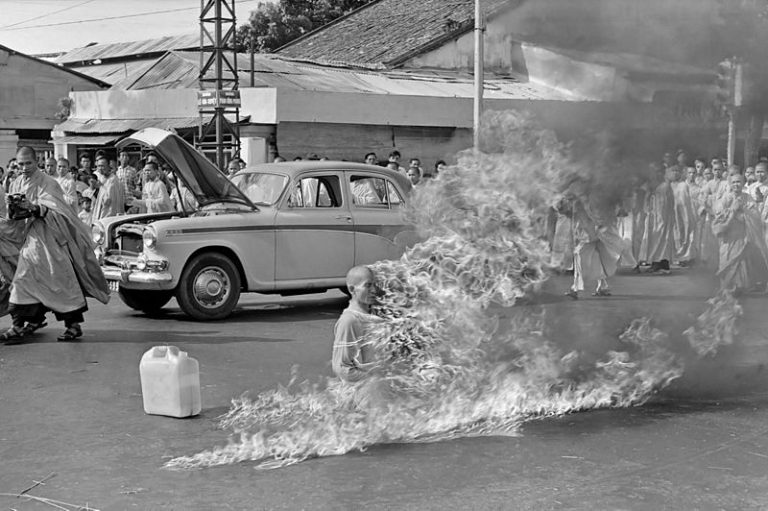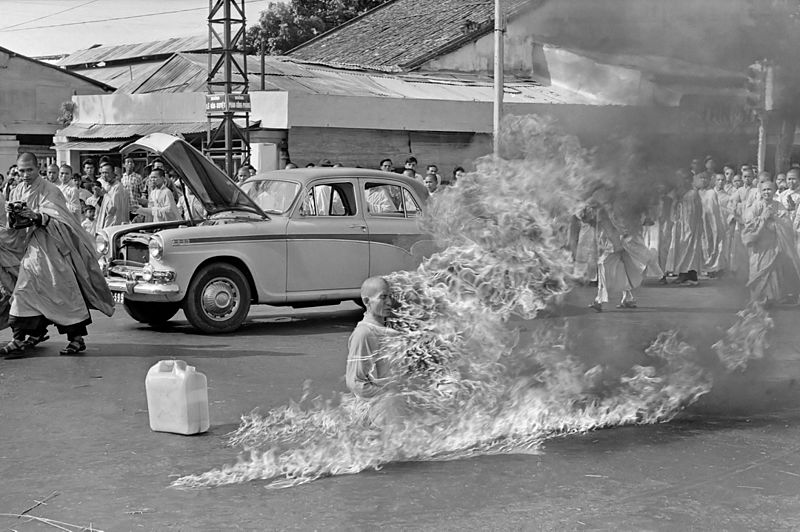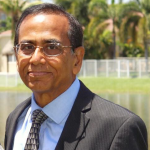

A Civil disobedience creates such a crisis and establishes such creative tensions, that a community that has constantly refused to negotiate is forced to confront the issue
By Nazarul Islam
In our contemporary world, a Civil disobedience creates such a crisis and establishes such creative tensions, that a community that has constantly refused to negotiate is forced to confront the issue. It seeks to do so, to dramatize any issue to the extent, that it can no longer be ignored.
The story of an ordinary Vietnamese, Thích Quảng Đức and the now infamous photograph taken by press photographer Malcolm Browne, of his shocking act of self-immolation during the Vietnam War, has fascinated me from the first moment I had first seen that.
The photo shows Quảng Đức, a Vietnamese Mahayana Buddhist monk, who lit himself on fire as part of a planned political protest at a busy Saigon road intersection on June 11, 1963. It was truly one of the most visually and emotionally stunning media events of the 20th century. Then-President John F. Kennedy, who would only live another five months himself said of the photo:
No news picture in history has generated so much emotion around the world.
Unfortunately, the Vietnam War would produce many other startling photographs before it was over.
While many disturbing images came out of the Vietnam War, there was something unique and disturbingly surreal about the Quảng Đức image and what it had represented. Unlike few other images in human history, the image of Quảng Đức sitting calmly in the middle of an inferno of his own creation caused much of the world to stop and look. Other now-famous images from that era, almost without exception, portrayed things being done to somebody, in this case it was somebody doing something terrible to himself.
The impact of this photo globally, was overwhelming. For a moment people all around the world simultaneously put their hands on their mouths and went silent. What brings a man to do something so horrific to himself and yet with such apparent calm lucidity?
One of the few reporters that bothered to attend the event, David Halberstam of the New York Times, wrote:
I was too shocked to cry, too confused to take notes or ask questions, too bewildered to even think … As he burned he never moved a muscle, never uttered a sound, his outward composure in sharp contrast to the wailing people around him.
Why would somebody light themselves on fire for a political cause? What could possibly justify such an extreme act of self-destruction? Who was this person and what motivated him?
In order to understand the case of Thich Quảng Đức and how it relates to the am issue long ignored. One must understand the political landscape upon which it transpired.
Quảng Đức and his fellow monks had been trying desperately for some time to get a corrupt and seemingly indifferent global media to focus on the religious oppression of Buddhists in Vietnam by the Catholic-dominated Diem government. A ban on the flying of religious flags led to a large protest by Buddhists in the city of Huế on May 8, 1963.
Some nine thousand people attended the protest which was eventually rocked by an explosion of uncertain origin followed by police and military opening fire on the crowd, killing 9 and wounding many others, including two children who were crushed underneath the wheels of government armored personnel carriers.
The government had blamed the Huế massacre on the Vietcong and the global media either ignored or failed to give the event the attention it deserved. The US ambassador to South Vietnam sided with the Diem government and called government explanations “objective, accurate, and fair,” which was repeated by much of the global media.
The dishonesty and indifference of the media and government became a very pressing and frustrating problem for the Buddhists of Vietnam. The government was now openly slaughtering Buddhist protestors and the media was either ignoring or spinning it in favor of the government.
Indeed, the aforementioned David Halberstam of the New York Times, who would be one of the few journalists to attend the press gathering in Saigon on June 11, had himself subtly implied that the Hue protest might be linked to Communists and that the casualties were caused by an agent provocateur in the crowd rather than government forces.
How could Buddhists get a largely indifferent media to give their situation the attention it deserved? The problem, of course, was solved quite dramatically, but it was not a spontaneous event and only a handful of international reporters were in attendance that day.
The self-immolation of Quảng Đức was part of a strategic plan to force the international media to pay attention. If you look at the photo closely you will see other monks with cameras walking around. This event was carefully staged.
The plan did work, the world media did pay attention, because it was hard to ignore something so dramatic as a man lighting himself on fire in order to protest injustice. Several copycats immolated themselves later that year as well but did not get the same level of attention and in fact led to one official in Vietnam saying that she would…
The flippant attitude was not shared by the rest of the world, and Quảng Đức’s sacrifice ultimately set off a chain of events that led to the end of the Diem government, but one must understand the key to this event was that it forced the global media to pay attention, and that was what caused a shift in public opinion and ultimately helped bring about change.
Also read: Buddhist Uprising
____________________
About the Author
